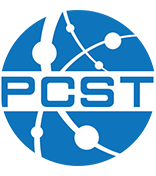Using videos of live surgeries to communicate medical knowledge to the public
Author: Marie Eggeling – Leibniz-Institut für Wissensmedien, Germany
Co-authors:
Martina Bientzle – Co-author
Joachim Kimmerle – Co-author
Educational online videos are frequently used in science communication, as they provide opportunity for inventive and purposeful transfer of scientific knowledge. In video format, content can be presented in a realistic and lively manner, or in a more schematic and explanatory way. Medical treatments like surgical operations are hard for laypeople to grasp, since they often lack the basic anatomical knowledge that is necessary to process such complex information adequately. This is particularly challenging when patients are supposed to make an informed decision about whether to undergo a certain medical treatment.
For dealing with this challenge, we used videos of online surgical operations taken from the internet platform www.sectio-chirurgica.de. These videos present complex anatomical content by illustrating and telling stories of actual medical cases in the applied setting of a surgical operation. In an experimental study with N = 151 participants we aimed to examine under which circumstances laypeople may benefit from particular representations of complex medical information. In a 2×2 between-group design we examined the impact of the representation format (realistic vs. schematic representations), and also studied the role of the opportunity for participants to use a navigation bar (navigation option vs. no navigation option).
We found a significant increase in people’s certainty regarding their hypothetical decision whether or not to undergo surgery after watching the video, indicating that such videos may support the decision-making process. In addition, the availability of a navigation bar led to a higher knowledge gain. Finally, we found that those participants who watched a realistic video experienced more negative emotions (disgust and fear) and rendered a less favorable judgment regarding the video than those who watched a schematic video. In this talk we will discuss the implications of our study for future research and practical application in science communication.
The author has not yet submitted a copy of the full paper.
Presentation type: Individual paper
Theme: Stories
Area of interest: Investigating science communication practices
